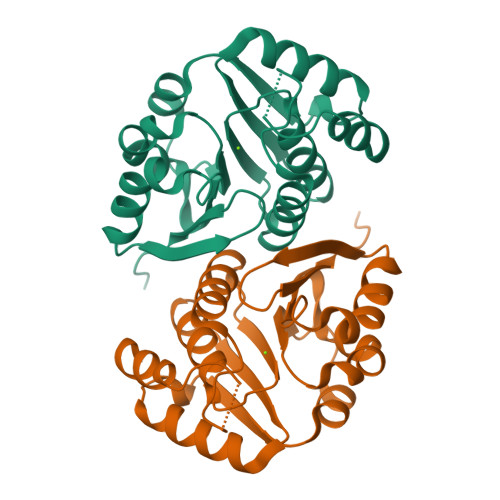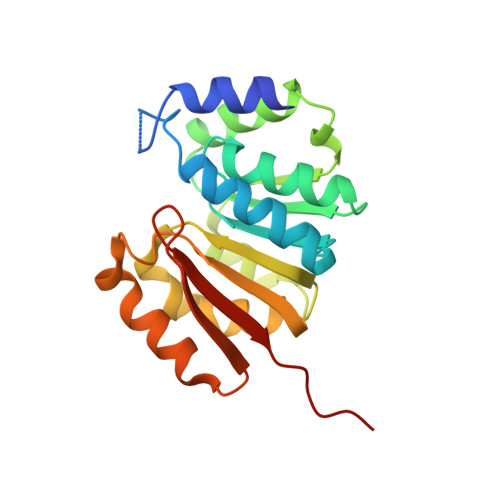Structural Characterization and Extended Substrate Scope Analysis of Two Mg 2+ -Dependent O-Methyltransferases from Bacteria.
Sokolova, N., Zhang, L., Deravi, S., Oerlemans, R., Groves, M.R., Haslinger, K.(2023) Chembiochem 24: e202300076-e202300076
- PubMed: 36942619
- DOI: https://doi.org/10.1002/cbic.202300076
- Primary Citation of Related Structures:
8C9S, 8C9T, 8C9V - PubMed Abstract:
Oxygen-directed methylation is a ubiquitous tailoring reaction in natural product pathways catalysed by O-methyltransferases (OMTs). Promiscuous OMT biocatalysts are thus a valuable asset in the toolkit for sustainable synthesis and optimization of known bioactive scaffolds for drug development. Here, we characterized the enzymatic properties and substrate scope of two bacterial OMTs from Desulforomonas acetoxidans and Streptomyces avermitilis and determined their crystal structures. Both OMTs methylated a wide range of catechol-like substrates, including flavonoids, coumarins, hydroxybenzoic acids, and their respective aldehydes, an anthraquinone and an indole. One enzyme also accepted a steroid. The product range included pharmaceutically relevant compounds such as (iso)fraxidin, iso(scopoletin), chrysoeriol, alizarin 1-methyl ether, and 2-methoxyestradiol. Interestingly, certain non-catechol flavonoids and hydroxybenzoic acids were also methylated. This study expands the knowledge on substrate preference and structural diversity of bacterial catechol OMTs and paves the way for their use in (combinatorial) pathway engineering.
Organizational Affiliation:
Department of Chemical and Pharmaceutical Biology, University of Groningen, Antonius Deusinglaan 1, 9731AV, Groningen, The Netherlands.



















